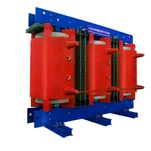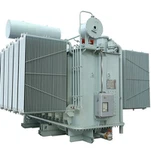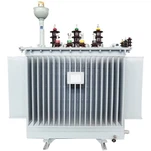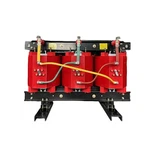The connection group of a three-phase transformer (e.g., Yyn0 and Dyn11) determines the connection method of the high-voltage (HV) and low-voltage (LV) windings and the phase relationship between the two sides. These two connection types have significant differences, mainly in winding connection, phase shift, and application scenarios. Below is a detailed analysis:
1. Connection Method
Yyn0 (Star-Star Connection, Zero Phase Shift)
The HV and LV windings are both connected in a star (Y) configuration.
The neutral point (N) is usually brought out and can be grounded.
The voltage phases on the HV and LV sides are identical, with no phase shift (0°).
Characteristics:
Suitable for systems requiring a grounded neutral point.
Weaker suppression of higher-order harmonics.
Dyn11 (Delta-Star Connection, 11-Point Phase Shift)
The HV winding is connected in a delta (D) configuration, and the LV winding in a star (Y) configuration.
The neutral point (N) on the LV side is typically brought out and can be grounded.
The LV side voltage lags the HV side voltage by 30° (corresponding to the 11 o'clock position on a clock face).
Characteristics:
Effectively eliminates higher-order harmonics, particularly third harmonics, improving power quality.
The delta configuration provides a path for circulating higher-order harmonic currents.
2. Phase Relationship
Yyn0: The voltage phases on the HV and LV sides are completely identical (0° phase shift).
Dyn11: The LV side phase lags the HV side phase by 30°.
This phase shift plays an important role in multi-transformer parallel operation or complex power grids, avoiding phase conflicts in different networks.
3. Neutral Point Characteristics
Yyn0:
The neutral point can be directly brought out and grounded.
Suitable for loads requiring a neutral point, such as single-phase loads (lighting systems, residential power).
Offers no natural suppression of third harmonics, potentially causing system oscillations or neutral point drift.
Dyn11:
The neutral point on the LV side can be grounded, providing a neutral for the LV side.
The delta winding on the HV side suppresses third harmonics, preventing them from entering the power grid.
Provides more stable neutral point voltage, suitable for unbalanced loads.
4. Application Scenarios
Yyn0:
Commonly used in low-voltage distribution networks, particularly in systems requiring a grounded neutral point and supplying single-phase loads.
Suitable for systems with low harmonic requirements.
Dyn11:
Widely used in distribution and industrial scenarios, especially in medium and high-voltage networks.
Ideal for situations requiring harmonic suppression or with unbalanced loads, such as industrial power or utility distribution substations.
The 30° phase shift improves system performance in multi-transformer parallel operation.
5. Impact on Parallel Operation
Yyn0 and Dyn11 cannot operate in parallel directly due to their phase differences (0° vs. 30°).
To enable parallel operation, all transformers must have the same connection group and impedance.
6. Advantages and Disadvantages Comparison
| Feature | Yyn0 | Dyn11 |
|---|---|---|
| Winding Connection | Star-Star | Delta-Star |
| Phase Shift | 0° | 30° |
| Neutral Point | Neutral on both HV and LV sides, can be grounded | Neutral on LV side only, HV side has no neutral |
| Harmonic Suppression | Weak, third harmonics can easily enter the system | Strong, third harmonics circulate within the delta winding |
| Single-Phase Load | Good | Good |
| Application Scenarios | Distribution networks, single-phase loads | Industrial power, harmonic-prone scenarios |
| Parallel Operation | Only with other Yyn0 transformers | Only with other Dyn11 transformers |
Summary
Yyn0 is suitable for systems requiring a grounded neutral point and abundant single-phase loads, such as residential distribution networks.
Dyn11 is more appropriate for industrial power supply and environments with significant harmonic distortion due to its harmonic suppression capabilities and phase shift characteristics.
When choosing a connection group, consider system requirements, load characteristics, and grid parameters to ensure stable and reliable operation.
If you need further technical calculations or specific application guidance, feel free to contact us!











